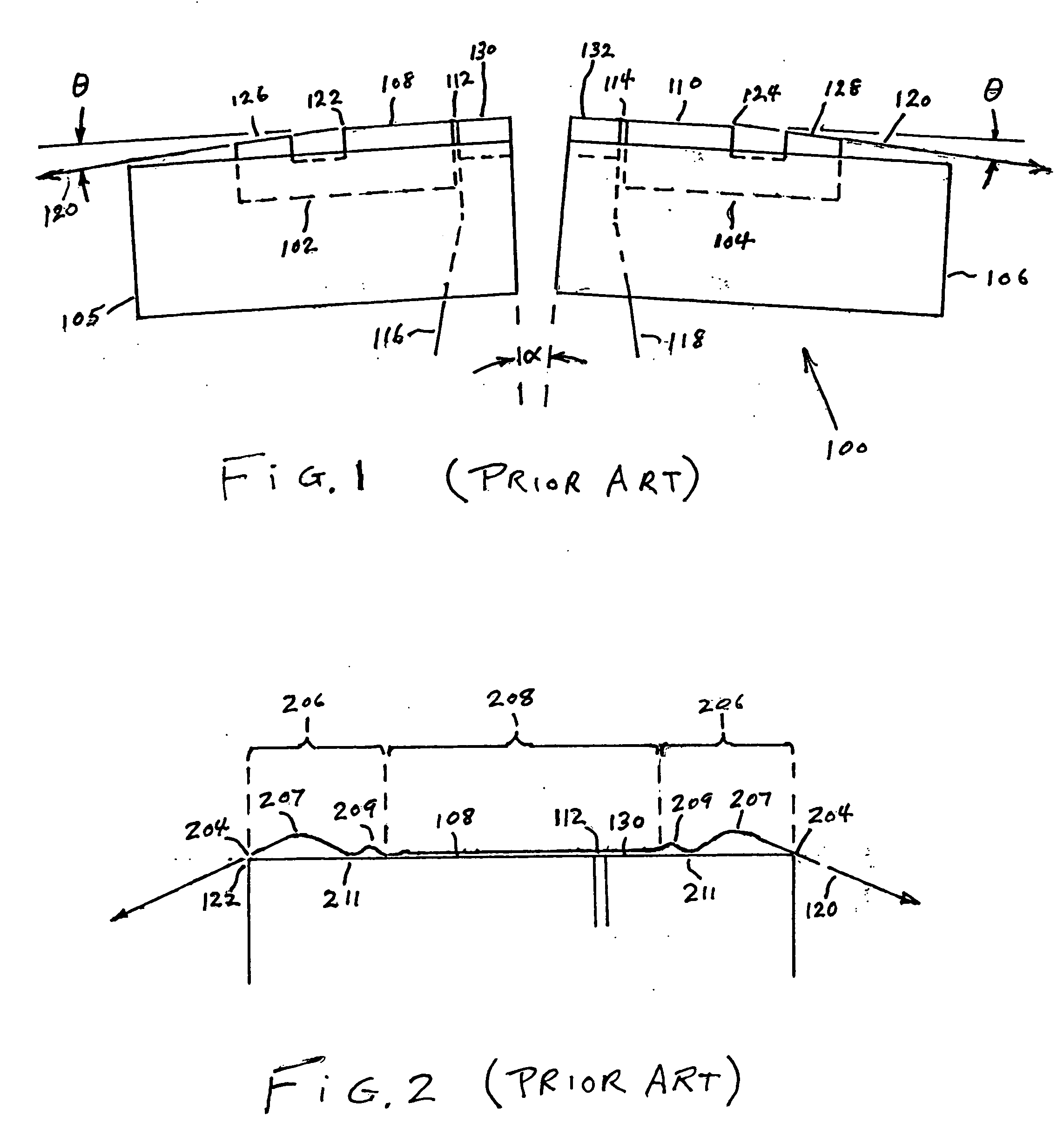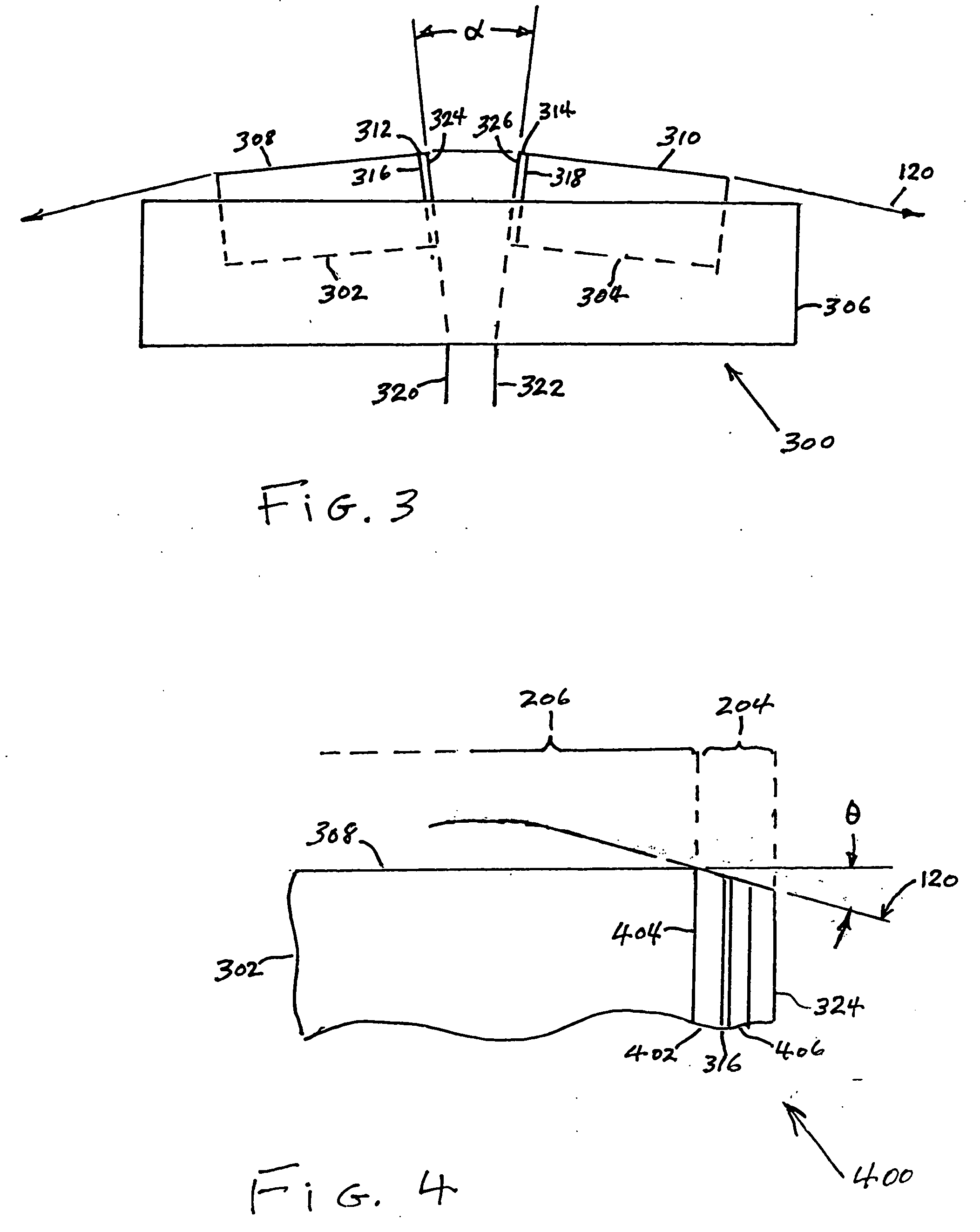Compression zone recording head
a compression zone and recording head technology, applied in the field of magnetic tape recording heads, can solve the problems of excessive wear on the surface of the transducer, and achieve the effect of lowering the cost of fabrication and flying heigh
- Summary
- Abstract
- Description
- Claims
- Application Information
AI Technical Summary
Benefits of technology
Problems solved by technology
Method used
Image
Examples
first embodiment
[0026]FIG. 3 illustrates a compression zone recording head 300 according to the present invention. The head 300 comprises rowbar substrates 302 and 304 of a wear resistant material, such as the substrate ceramic typically used in magnetic disk drive heads, are fixed in a carrier 306 at a small angle α with respect to each other. The ceramic rowbar substrates 302 and 304 are provided with flat transducing surfaces 308 and 310. Rows of transducers 316 and 318 are provided at the surfaces of gaps 312 and 314. Electrical connection cables 320 and 322 connect the transducers to the read / write channel of the associated tape drive. The rows of transducers are protected by thin closures 324 and 326 made of a layer of hard, preferably conductive, material such as Al—Fe—Si (Sendust) deposited over the row of transducers, or alternatively of a layer of Al—O—Ti—C, Zr—O—Ti, Si—N, Si—C or Zr—O deposited or bonded to the row of transducers.
[0027]FIG. 4 illustrates an enlarged portion 400 of the ro...
second embodiment
[0029]FIG. 5 illustrates a compression zone recording head 500 according to the present invention. The head 500 comprises rowbar substrates 502 and 504 of a wear resistant material, such as the substrate ceramic typically used in magnetic disk drive heads, fixed in a carrier 506. The ceramic rowbar substrates 502 and 504 are provided with flat transducing surfaces 508 and 510 that lie in the same plane, or alternatively, are separated from one another and form a small angle (not shown) with respect to each other. Rows of transducers 516 and 518 are provided on the surfaces of gaps 512 and 514 at the outer edges of substrates 502 and 504. Electrical connection cables 520 and 522 connect the transducers to the read / write channel of the associated tape drive. The rows of transducers 516 and 518 are protected by thin closures 524 and 526, respectively, made of a layer of hard, preferably conductive, material such as Al—Fe—Si (Sendust) deposited over the insulation layer on the row of tr...
PUM
 Login to View More
Login to View More Abstract
Description
Claims
Application Information
 Login to View More
Login to View More - R&D
- Intellectual Property
- Life Sciences
- Materials
- Tech Scout
- Unparalleled Data Quality
- Higher Quality Content
- 60% Fewer Hallucinations
Browse by: Latest US Patents, China's latest patents, Technical Efficacy Thesaurus, Application Domain, Technology Topic, Popular Technical Reports.
© 2025 PatSnap. All rights reserved.Legal|Privacy policy|Modern Slavery Act Transparency Statement|Sitemap|About US| Contact US: help@patsnap.com



